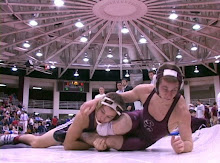"Social Class and the Hidden Curriculum of Work"
By: JEAN ANYON
JEAN ANYON
By:
 JEAN ANYON
JEAN ANYON (From: Journal of Education, Vol. 162, no. 1, Fall 1980.)
In this article, Anyon argues thats schools these days prepare student sfor jobs based on their economic and social backgrounds. The white rural neighborhood prepares its children to be doctors and lawyers while the inner city elementary schools prepares the children to work in the vocational field.
1.) "In the two working-class schools, work is following the steps of a procedure. The procedure is usually mechanical, involving rote behavior and very little decision making or choice. The teachers rarely explain why the work is being assigned, how it might connect to other assignments, or what the idea is that lies behind the procedure or gives it coherence and perhaps meaning or significance. Available textbooks are not always used, and the teachers often prepare their own dittos or put work examples on the board. Most of the rules regarding work are designations of what the children are to do; the rules are steps to follow. These steps are told to the children by the teachers and are often written on the board. The children are usually told to copy the steps as notes. These notes are to be studied. Work is often evaluated not according to whether it is right or wrong but according to whether the children followed the right steps."
This shows that the teachers and faculty are trying to continue the stereotype that gets this country into trouble. We haveto broaden kids' minds, and show them that they can be whatever they want. If they can't make decisions on their own, it will not lead them to success, but following the crowd, and in an inner-city neighborhood there is not always the right crowd. You haveto make them beleive from an early age too.
2.) "In the middle-class school, work is getting the right answer. If one accumulates enough right answers, one gets a good grade. One must follow the directions in order to get the right answers, but the directions often call for some figuring, some choice, some decision making. For example, the children must often figure out by themselves what the directions ask them to do and how to get the answer: what do you do first, second, and perhaps third? Answers are usually found in books or by listening to the teacher. Answers are usually words, sentences, numbers, or facts and dates; one writes them on paper, and one should be neat. Answers must be given in the right order, and one cannot make them up."
In this setting the faculty lets the students make some decisions for themselves which is good, but they also teach the kids just to get the right answer. Life is not just about getting the right answer, but the way you obtain the answer and when and how you learn the process.
3.) "In the affluent professional school, work is creative activity carried out independently. The students are continually asked to express and apply ideas and concepts. Work involves individual thought and expressiveness, expansion and illustration of ideas, and choice of appropriate method and material."
In the more estute setting the children are taught to think for themselves, and are encouraged to have open minds. This is crucial for owning a successful business, or getting into that good college. This is how we should treat all of our students. We need more open minds, because right now, America is running out of ideas.
This article was easy to understand and read. I never realized it but I do see this in schools. I went to a private school when I was a kid, and we learned completely different than the kids do in my inner-city clasroom. It is an eye-opening article that I would recomend to allteachers if not just for the fact that they could make an individual change in their classroom.
I think that relates to Johnson inthe way we must learn to say the words and stand up for what we want and talk about privelege, power, and difference. I also think that this relates to McIntosh in the way that our schools clearly see whiteness as a privelege. But, in this case it is not really whiteness, it is social class.
Does anybody else see this difference from their elementary schools, and their VIPS school?

Kinda but not really. when i went to elementary school it was very diverse there was a lot of black kids and spanish kids. but i get what your trying to say how the VIPS schools it is very concentrated with certain minorities, while at non urban elementary schools it is very mixed or majority white.
ReplyDeleteI can see that this resonated with you. Good question at the end, too. :)
ReplyDelete